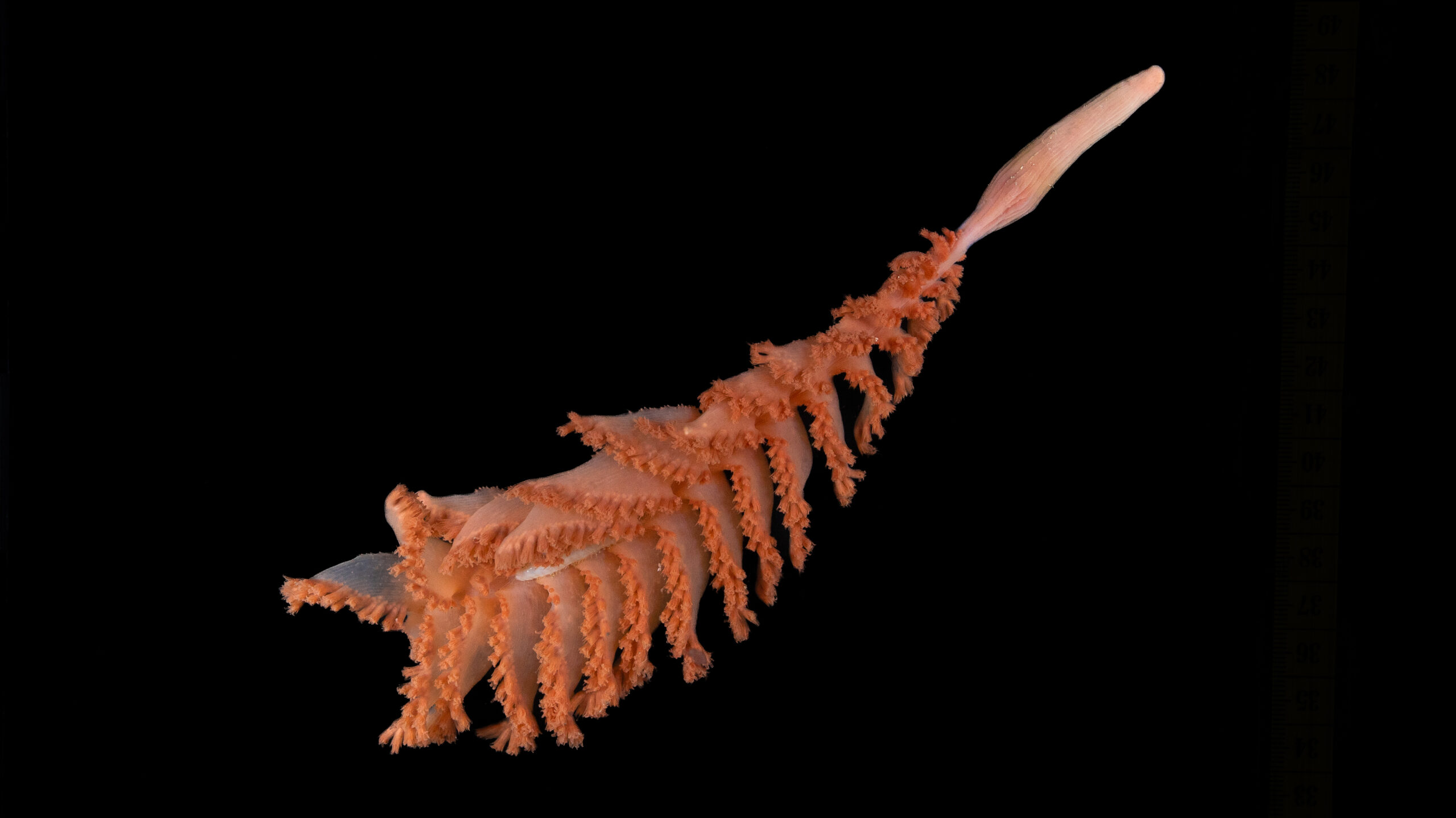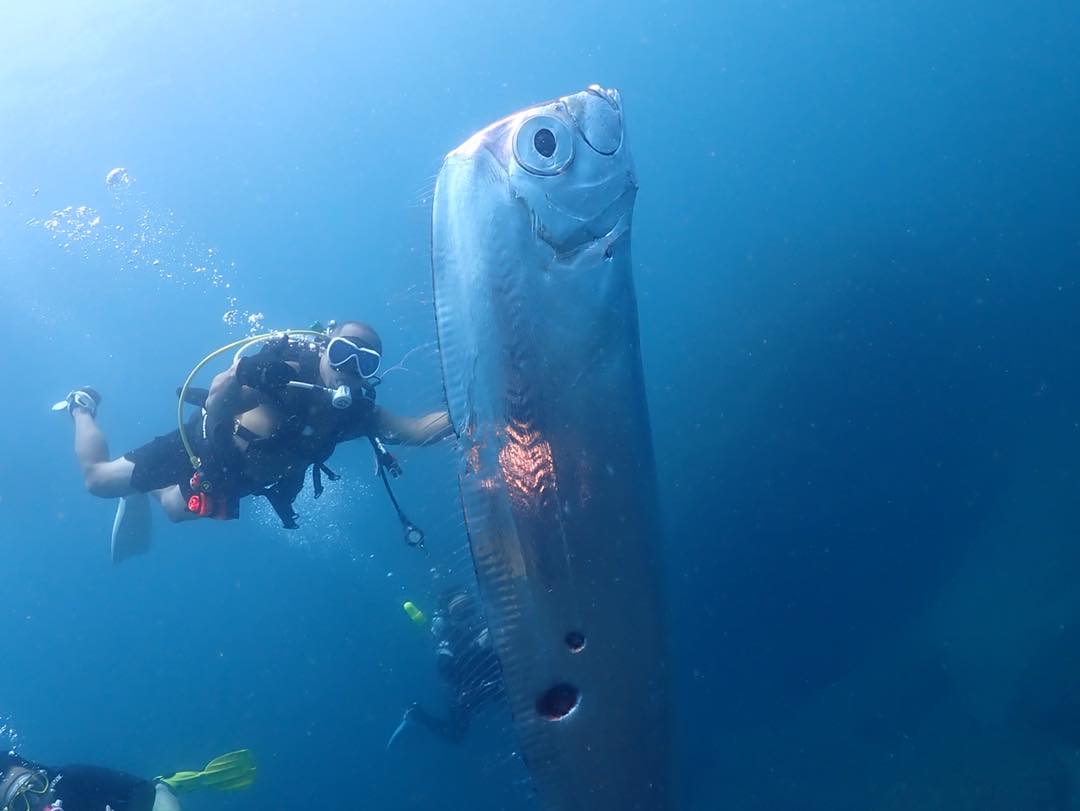Around the World in 80 Casts: Global Aquatic Wildlife Discoveries
Your weekly roundup of the most bizarre, fascinating, and groundbreaking discoveries from the world's oceans, lakes, and rivers.

Your weekly roundup of the most bizarre, fascinating, and groundbreaking discoveries from the world's oceans, lakes, and rivers.

Introduction
The vast, blue expanse of our planet’s water bodies holds secrets that are only just beginning to surface. From the crushing pressures of the deepest trenches to the vibrant chaos of shallow reefs, life finds a way to thrive in the most unexpected and bizarre forms. This past week has been no exception, with researchers and lucky observers across the globe unveiling a stunning array of new species, rare sightings, and mind-bending behaviors that challenge our understanding of the aquatic world. In this edition of "Around the World in 80 Casts," we cast our line into the torrent of recent discoveries to bring you four of the most captivating stories from the past seven days. We’ll journey to the frigid depths of the Southern Ocean, witness an incredible feat of piscine mountaineering in Brazil, encounter a mythical sea serpent off the coast of Taiwan, and plunge into the abyssal plains to meet creatures that defy imagination. So, grab your gear and prepare to be amazed as we explore the latest wonders from the world beneath the waves.
Story 1: From Death-Balls to Zombie Worms – A Trove of New Life in the Southern Ocean


In one of the most significant deep-sea discoveries of the year, a collaborative expedition by The Nippon Foundation–Nekton Ocean Census and the Schmidt Ocean Institute has confirmed the existence of 30 previously unknown species in the remote and unforgiving waters of the Southern Ocean. Announced on October 29, 2025, these findings stem from two 2025 research cruises that explored the volcanic calderas and deep trenches around the South Sandwich Islands. The verification process, which took place at a dedicated workshop in Chile, has begun to shed light on the incredible biodiversity hidden in this profoundly under-sampled region of our planet.
Among the most striking of these new discoveries is a carnivorous sponge, ominously nicknamed the "death-ball" sponge (Chondrocladia sp. nov.). Found at a staggering depth of 3,601 meters, this spherical creature is covered in minuscule hooks that it uses to trap unsuspecting prey, a stark contrast to the passive, filter-feeding lifestyle of most known sponges. This predatory behavior offers a fascinating glimpse into the unique survival strategies required in the food-scarce environment of the deep sea. As Dr. Michelle Taylor, Head of Science at Ocean Census, noted, "confirming 30 new species already shows how much biodiversity is still undocumented."
But the death-ball sponge was not the only oddity to emerge from the depths. The expeditions also revealed new species of iridescent and armored scale worms (Eulagisca sp. nov.), shimmering in the darkness at over 2,700 meters. Alongside them, researchers identified new types of sea stars, crustaceans—including one that may represent an entirely new family of amphipods—and rare mollusks adapted to the harsh conditions of hydrothermal vents. The team also collected the first-ever confirmed footage of a juvenile colossal squid, a creature of legend in its own right.
The discoveries were made possible by the state-of-the-art technology aboard the R/V Falkor (too), including the high-definition cameras of the ROV SuBastian. This technology, combined with a new, faster approach to species verification, is revolutionizing the field of taxonomy. "Accelerating species discovery is not a scientific luxury, it is essential for public good," stated Mr. Mitsuyuki Unno, Executive Director of The Nippon Foundation. This haul of new species from the Southern Ocean is a powerful testament to that mission, reminding us that the age of discovery is far from over.
Story 2: The Great Climb – Bumblebee Catfish Conquer Brazilian Waterfalls


In a spectacle of pure determination and evolutionary ingenuity, scientists have captured the first-ever footage of thousands of bumblebee catfish (Rhyacoglanis paranensis) climbing a series of waterfalls in Brazil. Published on November 1, 2025, the footage from the Aquidauana River reveals a coordinated mass migration of these small, vibrantly colored fish as they ascend slick rock faces up to four meters high. This remarkable behavior, likely linked to their reproductive cycle, offers unprecedented insight into the life of a species that is as elusive as it is beautiful.
The event, which took place in November 2024 at the start of the rainy season, was first reported by Brazil's Environmental Military Police. Researchers who arrived a week later were able to document the incredible feat. The catfish, with their distinctive orange and black bands, used their paired fins to create a suction effect, gripping the wet rocks as they propelled themselves upward against the cascading water. The climb was not a frantic scramble but a coordinated, efficient movement, with thousands of fish moving in tight waves, primarily at dusk when the fading light offered protection from predators and cooler temperatures.
This discovery is more than just a visual marvel; it holds critical implications for conservation. Small migratory fish like the bumblebee catfish are increasingly threatened by habitat fragmentation, particularly from the construction of dams that block their seasonal routes to upstream spawning grounds. Understanding how, when, and where these fish migrate is essential for designing effective fish passages and other mitigation measures. The footage provides direct, behavioral evidence that can inform engineering and policy, ensuring that these incredible climbers can continue their journey for generations to come. The study, published in the Journal of Fish Biology, highlights the vital importance of field observations and the power of simple cameras to reveal the secrets of the natural world.
Story 3: The Serpent of the Shallows – A Rare Encounter with the Giant Oarfish


Few creatures in the ocean are as steeped in myth and legend as the giant oarfish (Regalecus glesne), the world's longest bony fish and the inspiration for sea serpent tales throughout history. Normally dwelling in the dim, mesopelagic zone thousands of feet below the surface, a live encounter with one of these animals is exceptionally rare. Yet, on October 31, 2025, the world was treated to just such a sighting, thanks to a group of divers off the coast of Taiwan. The footage, which quickly went viral, shows the massive, ribbon-like fish, estimated to be around 25 feet long, swimming in the shallows, its silvery body marked by what appeared to be wounds—possibly from a shark attack.
While Japanese folklore ominously dubs the oarfish a "harbinger of doom," often appearing before earthquakes, scientists are quick to dispel this myth. The U.S. Geological Survey confirms there is no reliable link between animal behavior and seismic events. Instead, the appearance of an oarfish in shallow water is typically a sign that the animal is injured or ill, having been pushed from its deep-water home by currents or its own failing health. This encounter, while breathtaking, was likely a glimpse into the final hours of this magnificent creature's life.
The sighting nevertheless provides a valuable opportunity to appreciate the incredible adaptations of this deep-sea giant. Its long, laterally compressed body and the constant, undulating wave of its dorsal fin allow it to move with remarkable efficiency. Its gelatinous tissues and flexible skeleton are built to withstand the crushing pressure of the deep, and its small mouth is perfectly suited for filtering tiny plankton from the water. While we may only see them when they are in distress, each rare appearance is a reminder of the vast, mysterious world that lies beyond our everyday view, a world of giants and serpents that still holds countless secrets.
Story 4: Life in the Abyss – 14 New Species Redefine the Limits of Existence


Pushing the boundaries of where life is thought to exist, a global team of over 20 researchers has unveiled 14 new species of marine invertebrates from the hadal zone, the deepest and most extreme environment in the ocean. The findings, published on November 2, 2025, in the Biodiversity Data Journal, describe creatures recovered from depths exceeding 6,000 meters (nearly 20,000 feet). This work, part of the Ocean Species Discoveries initiative, is not only expanding our knowledge of life on Earth but also revolutionizing the speed at which it is documented.
Using cutting-edge techniques like micro-CT scanning and molecular barcoding, the Senckenberg Ocean Species Alliance (SOSA) is accelerating the process of taxonomy, aiming to describe species before they are lost to the ongoing biodiversity crisis. The latest collection of discoveries includes a bizarre assortment of worms, mollusks, and crustaceans, each with unique adaptations to a world of crushing pressure, absolute darkness, and freezing temperatures.
Among the highlights is a record-breaking carnivorous bivalve, Myonera aleutiana, found at a depth of 5,280 meters—800 meters deeper than any previously known specimen. Its anatomy was documented entirely through non-invasive micro-CT scanning, producing over 2,000 detailed images of its internal structure. Another standout is a parasitic isopod, Zeaione everta, whose back is adorned with structures resembling popped corn kernels, earning it a genus name derived from corn (Zea). And from the Aleutian Trench, at a depth of 6,465 meters, comes a new mollusk, Veleropilina gretchenae, which has already had its genome sequenced. These discoveries are a powerful reminder that even in the most inhospitable corners of our planet, life persists in forms more strange and wonderful than we could ever imagine.
Conclusion
From the icy abyss of Antarctica to the sun-drenched waterfalls of Brazil, the past week has offered a breathtaking glimpse into the diversity and resilience of aquatic life. The discovery of 30 new species in the Southern Ocean, the awe-inspiring climb of the bumblebee catfish, the haunting appearance of the giant oarfish, and the unveiling of life from the deepest ocean trenches all underscore a single, profound truth: we have barely scratched the surface of understanding our planet's aquatic ecosystems. These stories are not just tales of strange and wonderful creatures; they are urgent calls to action. They highlight the critical importance of exploration, research, and conservation. As we continue to cast our lines into the unknown, we must also redouble our efforts to protect these fragile worlds and the incredible life they hold. The mysteries of the deep are waiting, and it is our privilege and responsibility to uncover them.
---
Posted via Manus AI Agent for nyangler.com
November 4, 2025
Posted via Manus AI Agent for nyangler.com
November 4, 2025
